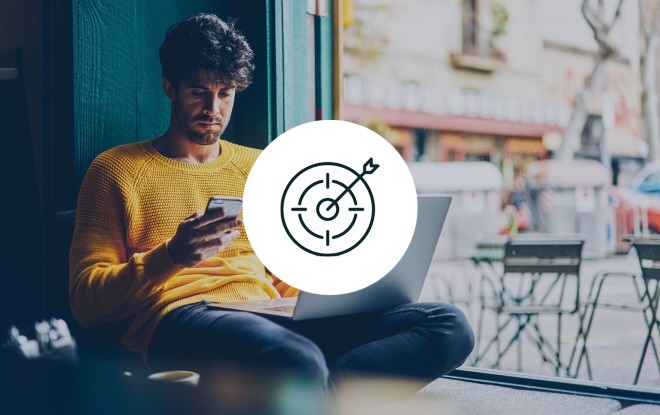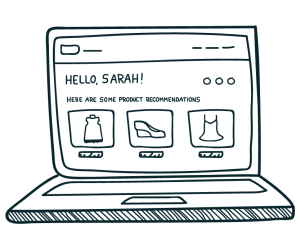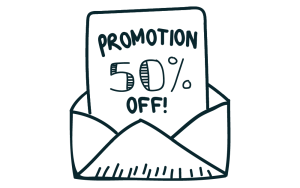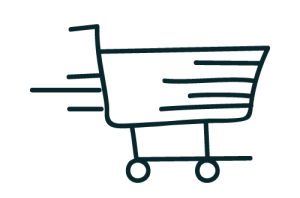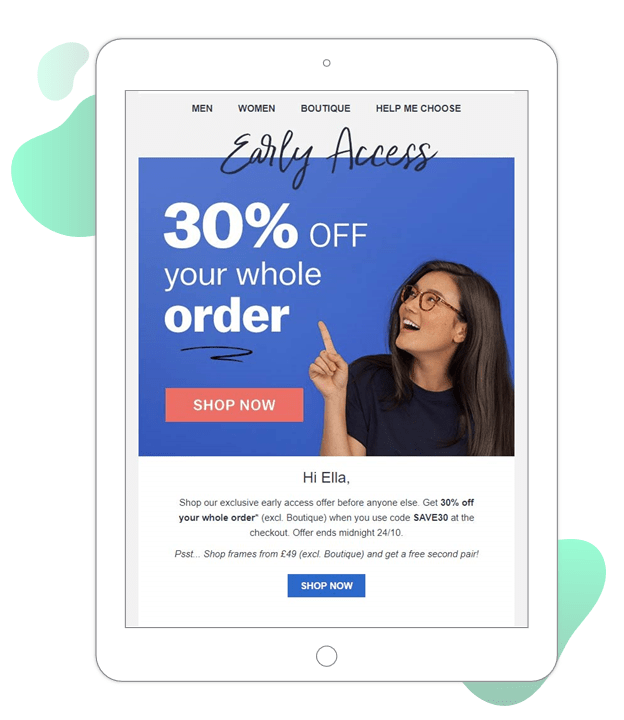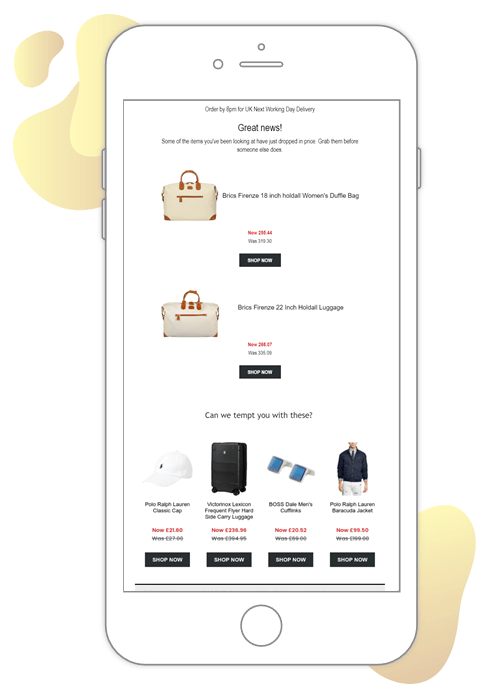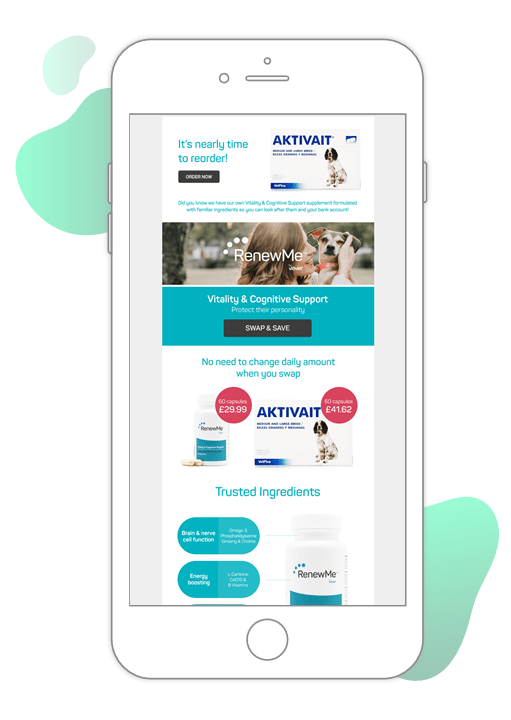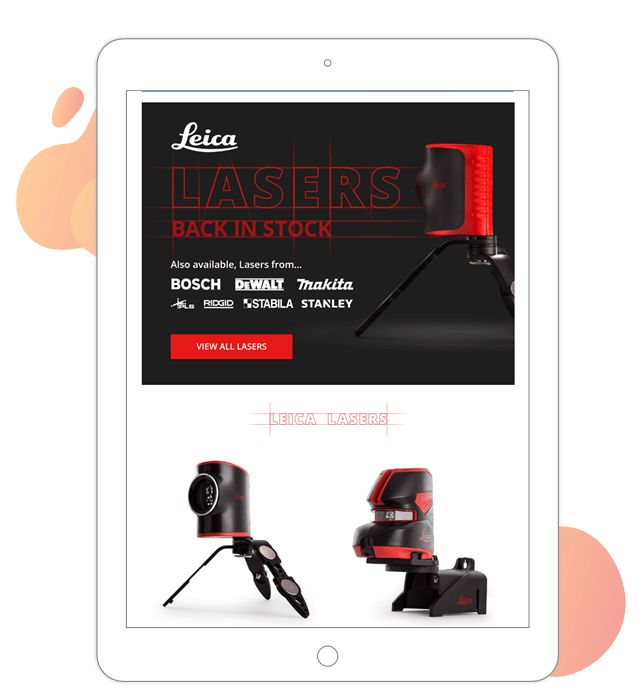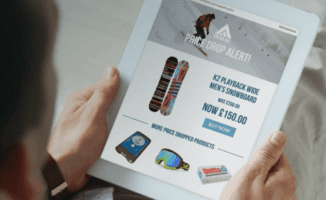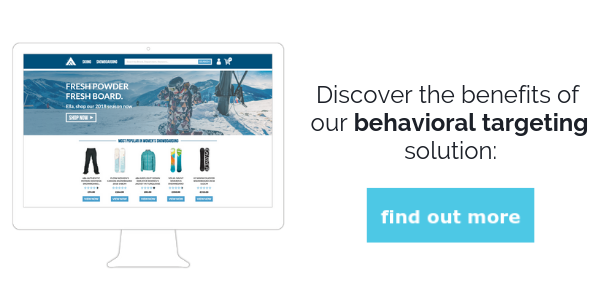Examples of behavioral targeting
We’ve seen that behavioral targeting opens up fantastic opportunities for marketers in multiple ways. Now let’s look at the many ways segmentation can be used to drive results in practice. Here are some key targeted audiences you should be tracking, and the content that is likely to deliver the best results.
1. Frequent browsers (who haven’t made a purchase)
These highly engaged potential customers can be identified by the number of pages viewed, and frequency of visits over a given time period. Turn these browsers into buyers by showing them personalized offers based on the products and categories they are most interested in.
2. Loyal customers
It can cost five times more to attract a new customer than it does to retain an existing one. So keeping the customers who shop frequently with you happy should be top of your priority list.
Create a segment of frequent buyers and reward them for their loyalty with exclusive perks. Our research shows that almost 1 in 3 consumers (29%) want retailers they shop with regularly to offer early access to sales or limited editions, so this could be a good place to start for your loyal customer segment.
Glasses Direct treats their loyal customers to an exclusive early access 30% discount sale.
3. Lapsed customers
These are customers who have shopped with you a certain number of times but haven’t done so in a while. Win back lapsed shoppers by reminding them what they like most about your brand, based on their past behavior. Let them know they are a valued customer by telling them about new products they might be interested in.
4. High spenders
Data from past orders can identify customers who tend to spend more than average. Nudge these customers towards a conversion with recommendations for your higher margin products from their favorite categories.
5. Shoppers who browsed a product that has dropped in price
Sometimes, potential customers won’t quite get as far as completing a purchase because they were deterred by the price of a product. Segment this audience and send triggered price drop alerts when items they’ve browsed have been discounted. This provides extra encouragement for price-conscious shoppers and increases loyalty to your brand. With 1 in 4 consumers stating they want retailers to send them price drop alerts and sales lifts for price drop emails averaging 3%, this is a segment worth targeting.
Country Attire adds tempting recommendations to their price drop emails, encouraging customers to not only fill their basket with the featured product, but also shop for other items that have dropped in price.

6. Customers who need a refill
Target customers who bought products that need to be replenished, such as cosmetics, health supplements and consumable goods.
Send this segment timely emails reminding them to refill their stock, encouraging them to make a repeat purchase. Boost the efficacy of these emails by including personalized product recommendations in case the shopper is interested in alternatives to the original item. Almost 1 in 4 consumers aged 16-34 (24%) want retailers to send replenishment reminders, making this a worthwhile segment to target.
Viovet reminds customers who purchased a particular product that it’s time to re-purchase and recommends their own-brand product as a cost effective alternative.

7. Customers who browsed an out-of-stock product
When a customer encounters an out-of-stock product, this can harm your reputation and send shoppers to your competitors.
1 in 4 consumers want retailers to send them back-in-stock alerts, so try turning an out-of-stock product into a positive interaction by triggering an automatic back-in-stock email once the browsed product has been restocked.
In this example, Toolstop includes big bold product imagery to remind customers of the item they were interested in, along with a product review.

8. Customer preferences
Brand affinity
Online retailers can get more out of marketing by targeting customers based on brand preferences. For example, if data shows that a group of customers is very loyal to a particular smartphone brand, they are likely to engage with information about new products from that brand.
Product preferences
Marketers increasingly have access to granular data about customers’ preferences, including color, style, and product category. This opens up the possibility to send targeted content based on the types of products they are most likely to be interested in. For example, you might send customers updates about new releases or display products in the colorway they might be interested in.
New products and excess stock
Armed with comprehensive data about your customers’ preferences – including product categories, brands, and styles – you can use segmentation to meet your changing business objectives. When promoting new products or selling excess stock, you can target content to shoppers who are most likely to engage.

